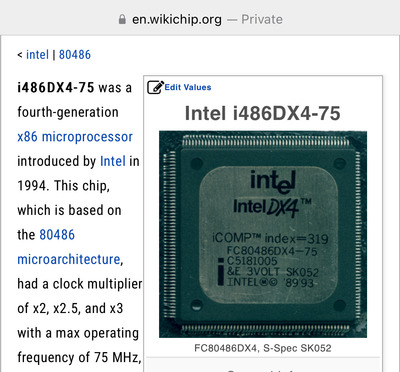rmay635703 wrote on 2024-02-03, 23:17:
Besides being an overdrive for obsolete 25mhz 486’s I’ve never understood the point of this chip in “new desktop “ computers
Slower cache, ram, video and hard drive performance meaning the venerable DX2-66 could run side by side .
Marketing? The DX4 was never intended to be a flagship (the Pentium was already out), so if you can advertise 9 extra MHz and if the large OEMs can perhaps use slower (read: cheaper) parts in the rest of the system than in a DX2/66 system, that sounds like a win...
And actually, I would go one step further - if they already had motherboard designs that were optimized for a 25MHz bus that they could stick a DX4 onto with minimal adjustments, while that design couldn't handle a 33MHz bus, that means they get an extra year of life out of that design...
Large OEMs have always, always wanted to cut costs (and deliver the most-MHz and the most megabytes with the least everything-else they can get away with), whether at that time, at the turn of the millennium (just how many i810 systems were shipped with high-MHz CPUs at top dollar?), or today...

